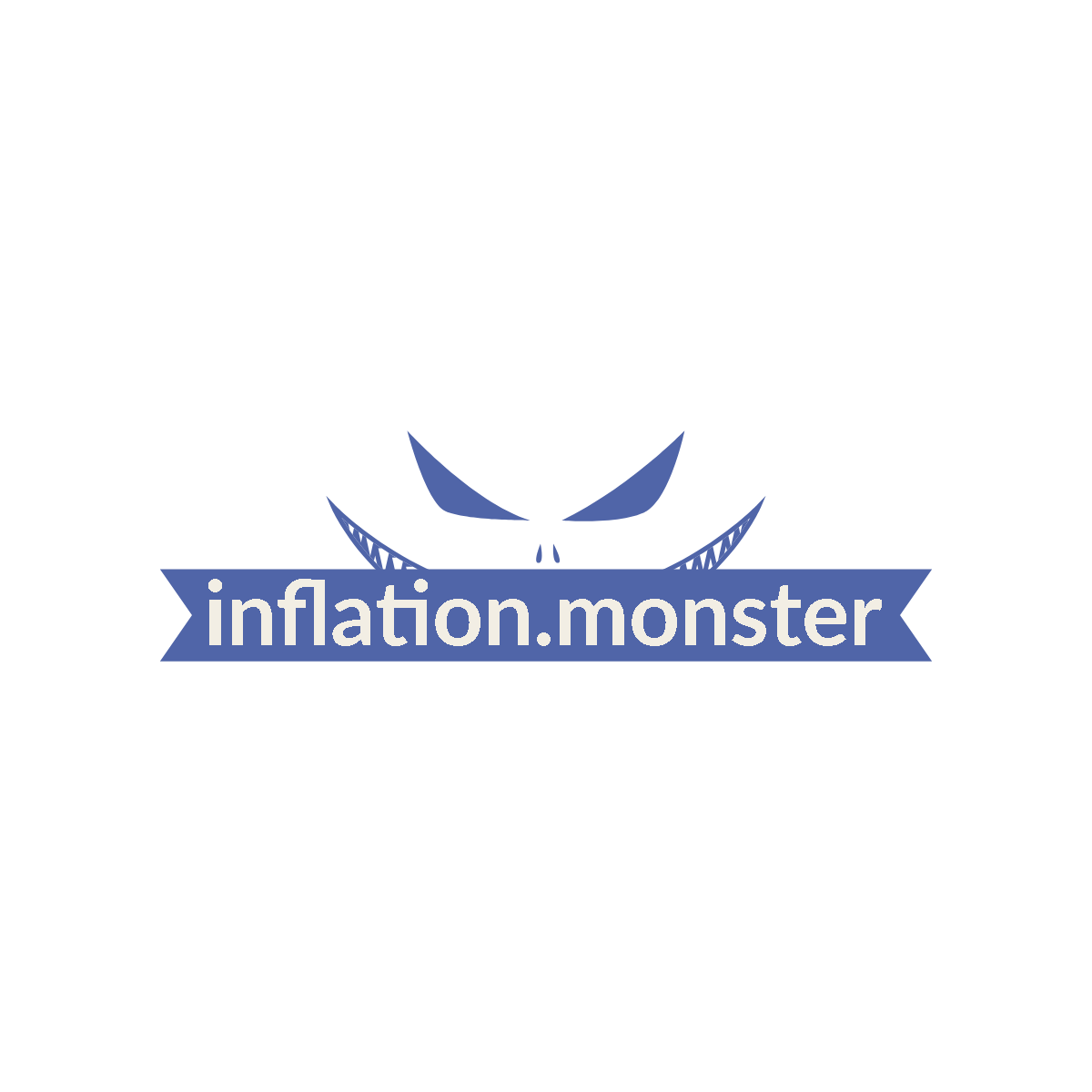If you’ve ever wondered how inflation affects the economy, specifically in the realm of food production, then look no further. At Inflation.Monster, we’re here to provide you with an in-depth understanding of the economic implications of inflation and its impact on the food industry. Join us as we explore the intricate relationship between rising prices, production costs, and supply chains, and how they shape the food we consume. Get ready to uncover the mysteries behind inflation and its influence on the economics of food production.

The Basics of Inflation
Inflation is a term that we often hear in discussions about the economy, but do we really understand what it means? In simple terms, inflation refers to the general increase in prices of goods and services over a period of time. When prices rise, the purchasing power of money decreases, which means that we can buy less with the same amount of money.
Defining Inflation
Inflation can be measured using various indices, such as the consumer price index (CPI) or the producer price index (PPI). These indices track the changes in prices of a basket of goods and services, allowing economists to gauge the rate of inflation. Inflation is usually expressed as an annual percentage increase in prices.
Causes of Inflation
There are several factors that can contribute to inflation. One of the main causes is an increase in aggregate demand. When consumers and businesses spend more, there is a higher demand for goods and services, which can push prices up. Another cause of inflation is cost-push inflation, which occurs when the costs of production, such as wages or raw materials, increase, forcing producers to raise prices.
Impact of Inflation on the Economy
Inflation can have both positive and negative effects on the economy. In the short term, moderate inflation can stimulate economic growth by encouraging consumer spending and business investment. However, high inflation can erode the value of money and reduce people’s purchasing power, leading to lower standards of living. It can also create uncertainty and make planning for the future more difficult for businesses and individuals.
Food Production and Inflation
Food production is a crucial sector that is directly influenced by inflation. Fluctuations in prices can have a significant impact on the profitability and sustainability of food production processes.
Link between Food Production and Inflation
There is a clear link between food production and inflation. As the prices of agricultural inputs, such as seeds, fertilizers, and machinery, increase due to inflation, the cost of producing food also rises. This can lead to higher prices for agricultural commodities, which can be passed on to consumers.
Key Factors Influencing Food Production
Several factors influence food production, including weather conditions, land availability, technological advancements, and government policies. These factors can affect the quantity and quality of agricultural output, which in turn can influence prices and inflation in the food sector.
Effects of Inflation on Food Production
Inflation can have various effects on food production processes. Firstly, it can reduce the profitability of farmers and food producers. When the prices of inputs increase, such as fuel or labor costs, profit margins are squeezed, making it more challenging for farmers to cover their production costs.
Additionally, inflation can also impact investment in the food production sector. Uncertainty resulting from inflation can make it difficult for businesses to plan and make long-term investment decisions. This can lead to a decrease in investment in new technologies and infrastructure, which can ultimately affect productivity and the overall efficiency of the food production industry.

Cost of Inputs in Food Production
The cost of inputs plays a crucial role in determining the profitability and viability of food production processes. However, inflation can significantly impact these costs and create challenges for farmers and food producers.
Primary Inputs in Food Production
There are several primary inputs in food production, including seeds, fertilizers, fuel, labor, and machinery. These inputs are essential for the production of crops and livestock and are crucial in determining the efficiency and productivity of the food production sector.
Rise in Prices of Inputs due to Inflation
When inflation occurs, the prices of inputs in food production tend to rise. For example, the costs of fertilizers and fuel can increase, driven by higher prices for raw materials and transportation. Labor costs can also go up due to increased wage rates, which can further impact the overall cost of producing food.
Effect on Profit Margins in Food Production
The rise in input prices due to inflation can have a direct impact on the profit margins of farmers and food producers. When input costs increase, it becomes more challenging to maintain profitability, especially if the prices of agricultural commodities do not rise proportionally. This can lead to financial strain for farmers and may result in a decrease in production or even exit from the industry.
Labor Costs in Food Production
Labor is a critical component of food production processes, and any changes in labor costs can have significant implications for the industry.
Importance of Labor in Food Production
Labor plays a vital role in various stages of food production, including planting, harvesting, processing, and distribution. The availability of skilled and semi-skilled workers is crucial for maintaining the efficiency and productivity of the food production sector.
Effect of Inflation on Wage Rates
Inflation can lead to an increase in wage rates, as workers demand higher salaries to keep up with rising prices. This can put additional pressure on food producers, as labor costs form a significant part of their overall production expenses. Higher wage rates can directly impact profit margins, particularly if the prices of agricultural commodities do not rise proportionally.
Impact on Hiring and Workers’ Rights
Inflation can also influence hiring decisions in the food production industry. When wages increase due to inflation, businesses may opt to hire fewer workers or invest in automation to reduce labor costs. This can have implications for employment levels, potentially leading to job loss or reduced job creation. Additionally, it is important to ensure that workers’ rights are protected during periods of inflation, as the cost of living increases and workers may require higher wages to sustain their quality of life.

Market Dynamics and Price Fluctuations
The food industry operates within the framework of supply and demand, and inflation can significantly impact market dynamics and price fluctuations.
Supply and Demand in the Food Industry
The food industry is driven by supply and demand dynamics. When demand for food exceeds supply, prices tend to rise, and when supply outstrips demand, prices may fall. Inflation can influence both supply and demand factors, ultimately impacting food prices.
Effects of Inflation on Food Prices
Inflation can directly impact food prices. As the costs of inputs, labor, and other factors of production increase due to inflation, these increased costs are often passed on to consumers. This can result in higher retail prices for food products, reducing the purchasing power of individuals and potentially leading to decreased consumption.
Price Volatility and Consumer Behavior
Inflation can contribute to price volatility in the food industry, as prices may fluctuate rapidly in response to changing supply and demand conditions. Price volatility can create uncertainty for consumers, affecting their purchasing decisions and behavior. For example, consumers may choose to reduce their consumption of certain food items or opt for cheaper alternatives when prices become unpredictable or unaffordable.
Money Supply and Inflation
The level of money supply in an economy can have a direct impact on inflation and the value of currency.
Role of Money Supply in Inflation
The money supply refers to the total amount of money available in an economy. When the money supply increases rapidly, there is a greater amount of money chasing the same quantity of goods and services, which can result in higher prices and inflation. The central bank plays a critical role in managing the money supply through monetary policy measures such as interest rates and open market operations.
Effects of Inflation on the Value of Currency
Inflation erodes the purchasing power of money, reducing the value of a currency over time. When inflation is high, the value of currency decreases, as individuals can buy less with the same amount of money. This can have implications for international trade and purchasing power parity between different countries.
Inflationary Expectations
Inflationary expectations refer to individuals’ and businesses’ beliefs about future inflation rates. These expectations can influence consumer behavior, investment decisions, and wage negotiations. If individuals expect high inflation in the future, they may change their consumption patterns or demand higher wages to protect themselves against the eroding value of money.
Government Policies and Regulations
Government policies and regulations can have a significant impact on the food production sector and its interaction with inflation.
Price Controls and Subsidies
Governments may implement price controls and subsidies to manage inflation and ensure the affordability of basic food items. Price controls can limit the prices that producers can charge for their products, while subsidies can provide financial support to farmers to reduce their production costs. These measures can help stabilize food prices and mitigate the impact of inflation on consumers.
Trade Policies and Import Costs
Trade policies and import costs can also influence the relationship between inflation and the food production sector. Tariffs or trade restrictions can increase the costs of imported food products, which can have an inflationary effect if these costs are passed on to consumers. Additionally, changes in exchange rates can impact import costs, influencing the overall inflation rate in the food sector.
Impact of Taxation on Food Production
Taxation policies can play a role in shaping the environment for food production. Taxes on inputs or on outputs in the food industry can increase production costs, which can be passed on to consumers through higher prices. Conversely, tax incentives or exemptions can help reduce the burden on food producers and contribute to lower inflation rates.
Climate Change and Food Production
Climate change and its effects on weather patterns can have a significant impact on food production processes and overall inflation.
Climate Variability and Agricultural Productivity
Climate variability, including changes in temperature and precipitation patterns, can directly affect agricultural productivity. Erratic weather conditions can lead to reduced crop yields, increased susceptibility to pests and diseases, and overall instability in food production. These factors can contribute to higher prices and inflation in the food sector.
Effects of Extreme Weather on Crop Yields
Extreme weather events, such as droughts, floods, or heatwaves, can have devastating effects on crop yields. Droughts can result in water scarcity, affecting irrigation systems and reducing agricultural productivity. Flooding can destroy crops and infrastructure, while heatwaves can lead to heat stress in plants, affecting their growth and development. These extreme weather events can disrupt food production and contribute to inflationary pressures.
Adapting to Climate Change in Food Production
Adapting to climate change is crucial for ensuring the long-term sustainability of food production. This can involve implementing climate-resilient farming practices, adopting new technologies, and diversifying crop varieties. Governments and international organizations also play a role in providing support and incentives for farmers to adapt to climate change, ultimately mitigating the impact of climate-related inflation in the food sector.
International Trade and Food Inflation
International trade plays a significant role in the food industry, and changes in global trade dynamics can impact food inflation rates.
Global Food Trade and Price Transmission
Global food trade can influence food prices and inflation rates in different countries. Changes in supply or demand in one country can have spill-over effects on other countries through price transmission mechanisms. For example, disruptions in the supply of a key agricultural commodity due to weather events or trade restrictions can lead to increased prices globally.
Impact of Exchange Rates on Food Prices
Exchange rates can also impact food prices in importing and exporting countries. When a country’s currency depreciates against other currencies, the cost of imported food products increases, leading to higher inflation rates. Conversely, a stronger currency can make imported food more affordable, potentially reducing inflation in the food sector.
Food Security and International Trade Policies
Food security is a critical concern for many countries, and governments often implement trade policies to protect domestic food production and ensure a stable supply of essential commodities. Import restrictions, tariffs, or export subsidies can impact international trade dynamics and potentially contribute to inflation in the food sector. Balancing the objectives of food security and price stability can be a complex challenge for policymakers.
Conclusion
Inflation and its impact on food production are interconnected in complex ways. Changes in input costs, labor wages, market dynamics, money supply, government policies, climate change, and international trade all have the potential to influence inflation rates in the food sector. Understanding these relationships and their implications is crucial for policymakers, businesses, and consumers alike. By considering the various factors at play and implementing effective measures, we can contribute to a more sustainable and resilient food production system that mitigates the negative effects of inflation and ensures affordability and access to food for all.




